Simultaneous Determination of Six UV-Filters in Cosmetics by HPL C
Liu Xin, Gong Hui
JALA (Group) Co. Ltd., China
Abstract A reversed-phase high performance liquid chromatographic method with diode-array detector was established to simultaneously determine the six UV-filters, isopentyl-4-methoxycinnamate, ethylhexyl methoxycinnamate, ethylhexyl salicylate, homosalate, butyloctyl salicylate and ethylhexyl triazone. They were separated on a Kromasil C18 column, with gradient elution by methanol and water, and detected by HPLC-DAD.All results demonstrated good linear relationship in proper mass concentration range. The limits of quantitation(LOQ) were between 0.5 and 1.25 mg/L. The recoveries of the six compounds ranged from 98.3% to 101.0% at two inrements with the relative standard deviation (RSD) no more than 1.5%.
Key words cosmetics; UV filters; high performance liquid chromatography
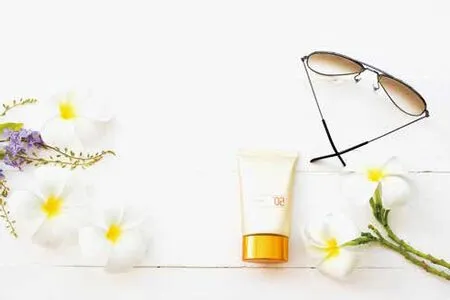
Sunscreen has become a hot topic in today’ s cosmetics industry. According to the mechanism of sunscreen,it can be categorized into 2 groups, i.e. physical UV-filter and chemical UV-filter. The former is majorly zinc oxide, titanium dioxide, which can block ultraviolet light by reflection and scattering. The latter, such as esters of salicylic acid, cinnamic acid, etc., can absorb the energy of ultraviolet light and then release it with transformed heat or visible light, therefore protect the skin from hurt of UV-rays. Chemical UV-filter is usually used in sunscreen cosmetics[1]because of its excellent effects and high compatibility with formula matrix. However, chemical UV-filters may break down into small organic molecules under the action of ultraviolet light, which can penetrate into the skin resulting in papules and dermatitis.[1,2]Therefore, many countries have limited additive amount of UV-filters in cosmetic products. Chinese “Safety Technical Specification for Cosmetics” (2015 Edition)(hereinafter referred to as “Specification 2015”) has made a clear regulation limits of 28 kinds of UV-filters, of which 26 kinds of chemical UV-filters have been limited additive amount in the range from 2% to 10% except for Drometrizde trisiloxane below 15%. Establishing accurate,efficient and sensitive analysis method of UV-filters is of great significance not only to strengthen quality and safety supervision of government, but also to improve internal product quality control of enterprises.
According to the reported papers, the normal methods used for the determination of chemical UV-filters are thin layer chromatography,[4]gas chromatography,[5]high performance liquid chromatography,[6-11]and so on. Because chemical UV-filters often have the characteristics of UV absorption, high performance liquid chromatography (HPLC) combined with a UV detector is widely used in determination of them. Those methods usually refer the chromatographic conditions written in “Specification 2015”, implementing the three solvents of methanol — tetrahydrofuran — perchloric acid/water solution as mobile phase. Gradient mode is used to analyze large variety of UV-filters. The problems in analysis are as follows: Firstly, tetrahydrofuran and perchloric acid have a corrosive effect on chromatographic column and some parts of instrument pipelines that made by PEEK material, resulting in gradual damage of the chromatographic system. Furthermore, perchloric acid belongs to classification of explosive reagents, which requiring for strict storage conditions of the laboratory. According to the Shanghai local government notice No. 44, which was issued in 2017,the safety management regulation of hazardous chemicals requires to install safety equipments for storing such reagents as perchloric acid. The requests involve of fire protection,explosion proof, anti-static electricity, monitoring, alarm system and so on. Therefore, it can be expected that application of perchloric acid is becoming more and more inconvenient. Secondly, there are many kinds of C18 columns at selection in reversed phase HPLC. In actual operation, resolution of UV-filters is unsatisfied on some C18 columns. Thirdly, the complex ternary mobile phase system makes the adjustment of gradient program time-consuming and laborious, which greatly limits the application of the method “Specification 2015”.
In this paper, a HPLC method for the simultaneous determination of 2 cinnamate, 3 salicylic acid esters and ethyl hexyl triazone was established. A simple mobile phase of methanol and water was used with changed flow rate at total running time of 25 min. This method proposed presents the advantages of simple mobile phase,high detection efficiency, accurate result and so on. It can be used as the internal control of finished products,and can also be applied to management of the cosmetics market under the supervision of government.
Experimental
Instrumentation and chemicals
High Performance Liquid Chromatography 1260(Agilent Technologies, USA) equipped with an online degasser, a column compartment with temperature control, an automatic injector and a diode array detector (DAD). KQ-100B Ultrasonic Cleaner, Kunshan Ultrasound Instrument Co., Ltd. HPLC-grade methanol and tetrahydrofuran were obtained from ANPEL laboratory technologies (Shanghai) Co., Ltd. 4 standard reagents of isopentyl-4-methoxycinnamate, ethylhexyl methoxycinnamate, ethylhexyl salicylate and homosalate were purchased from German CNW company. Butyloctyl salicylate and cosmetic raw material was obtained from Hallstar company. Ethylhexyl triazone and standard reagent was purchased from Adama Reagent Limited Company. Water purified by the ultrapure water system(Hitech Instruments Co., Ltd) was used for mobile phase and other sample preparation.
Standard working solutions
About 50 mg isopentyl-4-methoxycinnamate, 50 mg ethylhexyl methoxycinnamate, 125 mg ethylhexyl salicylate and 125 mg homosalate were accurately weighted and transferred into a 250 mL volumetric flask. Then methanol was used as solvent to dissolve and dilute to the scale at room temperature. The solution prepared as above was the mixed standard stock solution one. About 125 mg butyloctyl salicylate and 50 mg ethylhexyl triazone were accurately weighted and transferred into another 250 mL volumetric flask. Then tetrahydrofuran was used as solvent to dissolve and dilute to the scale. Such prepared solution was the mixed standard stock solution two. Then 0.25, 1.0, 2.5 and 5.0 mL of the standard stock solution one and two were moved to four 10 mL volumetric flasks respectively. Methanol/tetrahydrofuran ratio 8∶2 (v/v)was added and diluted to the scale. The set of six UV-filters solutions were used as working standard solutions.
Sample preparation
0.1 g cosmetic product (accurate to 0.1 mg) was added to 100 mL volumetric flask. The sample was completely dispersed with 20 mL tetrahydrofuran, and then methanol was added to the scale. The sample solutions were subsequently passed through a 0.45 μm hydrophobic membrane of PTFE filter. 5 μL of each sample solution and standard solution were then injected into the column.
HPLC conditions
The separation of six analytes was conducted on the Kromasil C18 column (250 mm × 4.6 mm i.d., 5 μm particle size). The injection volume was set at 5 μL.Column temperature was maintained at 30℃. And the analytes were monitored using DAD detector with 311 nm as detection wavelength. Mobile phase: initial methanol/water 90:10 (v/v), then a linear gradient profile up to 100% methanol in 3 minutes. 100% methanol was kept for 2 minutes. Then flow rate was increased from 1 mL/min to 2 mL/min and kept for 8.5 minutes. The proposed gradient elution program can be found in Table 1.
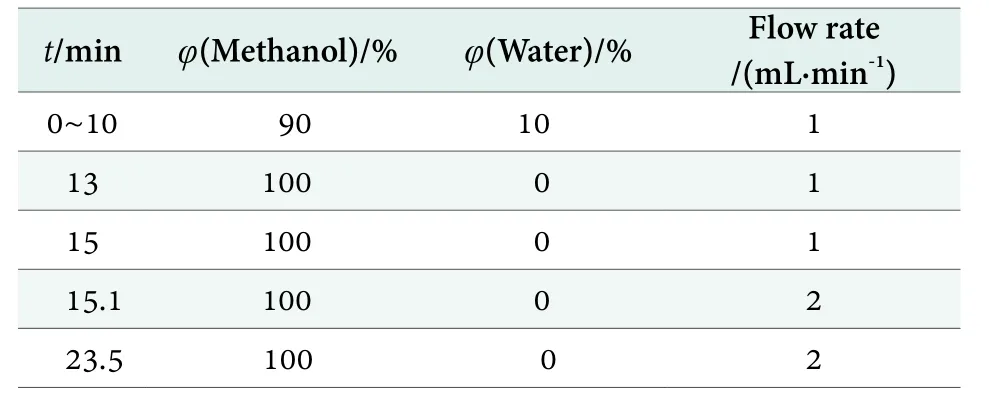
Table 1. Gradient elution program

Results and discussion
Optimum column
The column plays an important role in the separation of UV-filters. C18 is widely used as a RP column in chromatograph. But variable separation effects will be obtained on different C18 columns because of the tail sealing technology. In order to detect the six UV-filters simultaneously, columns of four brands, Athena C18-WP, ZORBAX Eclipse Plus C18, Waters Symmetry Shield RP18 and Kromasil C18 were systematically investigated.The results of former 2 columns showed that isopentyl-4-methoxycinnamate, ethylhexyl methoxycinnamate,butyloctyl salicylate and ethylhexyl triazone can be separated well, but ethylhexyl salicylate and two isomers of homocylate had difficulty to separate. According to the “Specification 2015”, diethylaminohydroxybenzol hexylbenzoate is another UV-filter commonly used in cosmetic products. In our study, the peaks of isopentyl-4-methoxycinnamate and diethylaminohydroxybenzol hexylbenzoate were seriously overlapped on Waters C18. Therefore it is not feasible to further development and application of this method. After consideration of chromatographic characteristics and analytical efficiency,the Kromasil C18 was finally chosen to perform chromatographic separation by gradient elution of mobile phase described as in HPLC conditions.
Optimum mobile phase
The separation and analysis of molecules by reversed phase chromatography is influenced by 3 factors, the structure of the analytes, the hydrophobicity of the stationary phases and the polarity of the mobile phase.The polarity of analytes is determined by the molecular skeleton, property and amount of functional groups, and substitution position of the compounds. The weaker is the polarity of analytes, the stronger will be the retention of column. The elution ability of the mobile phase becomes weaker with delayed retention time in terms of following factors, i.e. the greater surface tension, the larger dielectric constant, the higher polarity, and the tighter association of the analyte with the bonding phase. Therefore, it is usual way to introduce complex mobile phase to solve this problem in order to separate a wide polar distribution of UV-filter categories. The published papers normally referred to the chromatographic conditions of the “Specification 2015”, applying the ternary mobile phase of methanol-tetrahydrofuranperchloric acid/water. The aim of adding tetrahydrofuran is to shorten the running time. However, the solvent of tetrahydrofuran is highly volatile and can cause skin contact and inhalation toxicity. Perchloric acid is also a kind of explosive chemicals. The storage conditions in the laboratory ask for high requirement. Our previous publication[14]has improved this conventional method and chosen a simple mobile phase system of methanol and phosphoric acid/water to detect 11 kinds of UV-filters,such as diethylaminohydroxybenzol hexylbenzoate. The results were satisfactory after evaluation of experimental data. On the basis of our previous work, a simpler mobile phase of methanol and pure water was chosen in this study.Finally, the rapid separation and accurate determination of 6 kinds of UV-filters were realized through gradient mode in combination with variable flow rate, as shown in Figure 1.
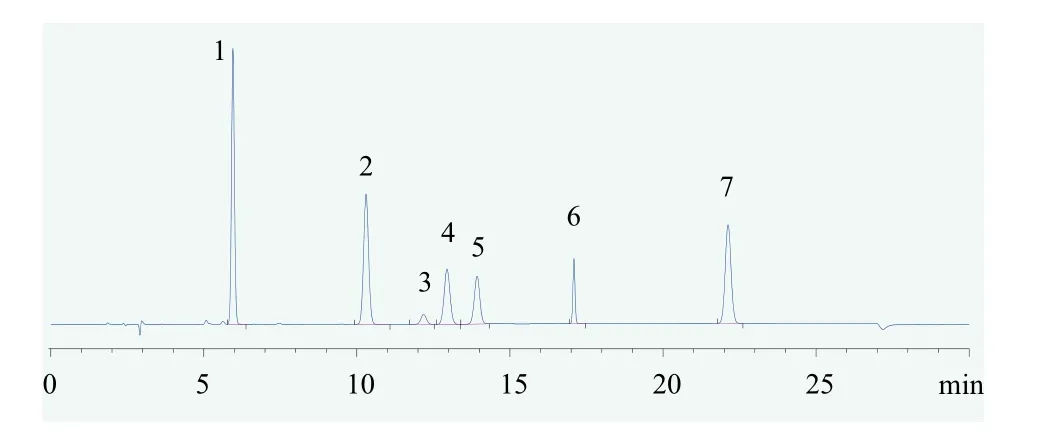
Figure 1. Chromatogram of standard solution of six UV-filters
Optimum of sample extraction
There are a big quantity of cosmetic formula and complex matrix, such as lipstick and foundation, which usually contain much oil components. In some cases, it is unable to disperse the sample matrix by mere methanol solvent, leading to the unsatisfied extraction of target UV-filters due to encapping effects. In addition, some UV-filters have limited solubility in methanol, e.g. ethylhexyl triazone. If only methanol is used as solvent, the extraction is incomplete and the quantification results will be lower than the theoretical value. Considering both the dispersity of oil based products and the solubility of target molecules,our work used two solvents with a proper amount of tetrahydrofuran for dispersing and then methanol to extract the sample. After investigation, the proportion of the mixed solvent is set atv(tetrahydrofuran)∶v(methanol)=20∶80. Under this condition, it was observed that all the target compounds such as ethylhexyl triazone were completely extracted. As a consequence, the quantitative results were accurate and reliable.
Calibration curve
Under chromatographic conditions described in HPLC conditions, a series of mixed standard solutions were injected respectively. The linearity of 6 UV-filters for the method was demonstrated by analyzing the peak response versus the concentration of standard solutions from the generated data. The linear relationship of 6 UV-filters in their respective concentration range was acceptable with correlation coefficient near 1.0000.The limit of the quantification (LOQ) is defined as the smallest peak detected with signal height that is 10 times that of baseline. In our study, the LOQ were estimated by successively decreasing the concentration of the prepared standard down to the smallest detectable peak. The results of regression equation, correlation coefficients and LOQ are summarized in Table 2.

Table 2. Regression equation, linear range and limit of quantitation
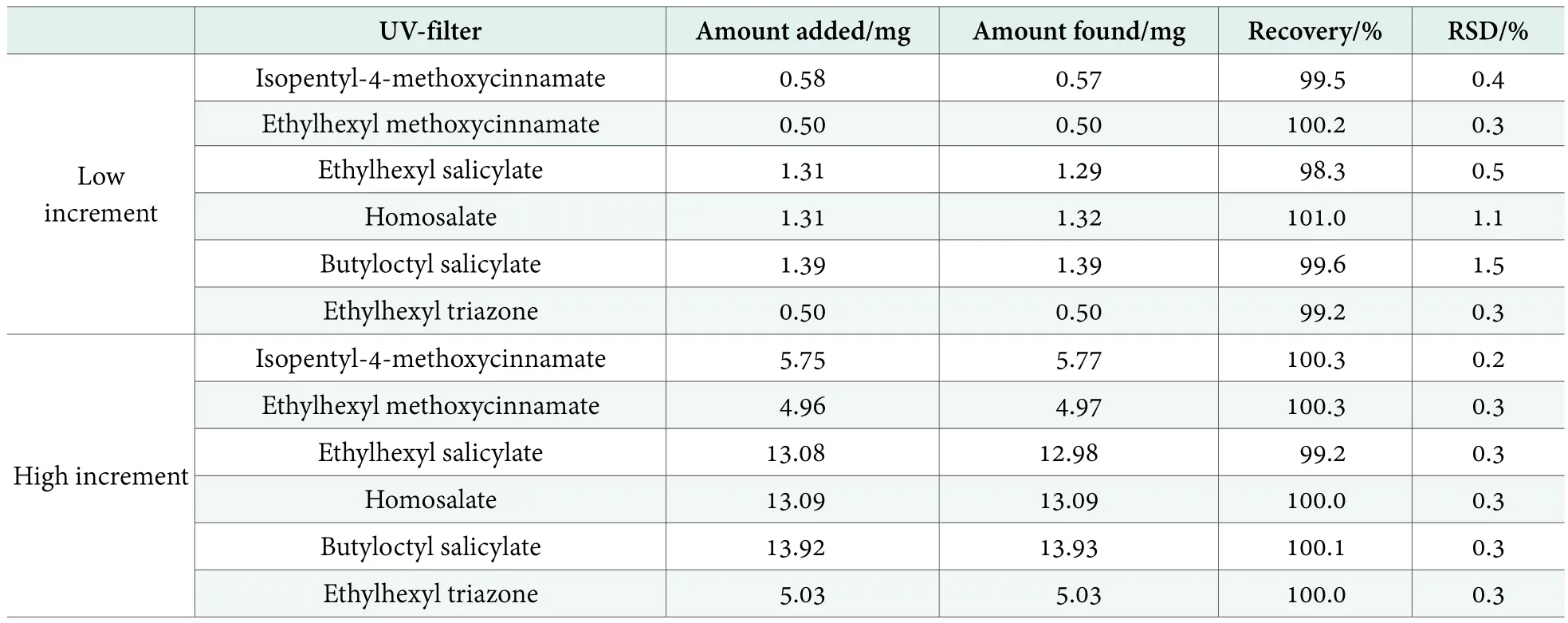
Table 3. Recovery and precision of the method (n=6)

Table 4. Results of sample test
Recovery and precision
To determine the recovery and precision of the method, a placebo formulation not containing UV-filters was prepared. The new method was then tested by spiking the placebo formulation with 2 increments of UV-filter solution and analyzed for 6 times. In our case, each 0.1 g of 12 placebo formula (accurate to 0.1 mg) was added to 100 mL volumetric flask. 6 flasks were added by 2.5 mL of mixed standard stock solution. Then subsequent treatment followed sample operation described. These 6 solutions were prepared as low increment sample solutions in recovery test. Another 6 flasks were added by 25 mL of mixed standard stock solution. After the same procedure, high increment sample solutions could be prepared. The recovery and precision of high and low increment were investigated by standard curve quantitative analysis. The experimental results were shown in Table 3. As can be seen, the recoveries of 6 UV-filters are between 98.3%~101.0%, and relative standard deviation (RSD) is less than 1.5%.
Applications
6 kinds of sunscreen finished products collected from the market were detected by the new method.The retention time of the standard solution and the UV characteristic spectrum were used to identify 6 UV-filters. The peak area was used to make quantitative analysis. The quantified results were shown in Table 4.The identification of UV-filters were all consistent with the ingredient list of the products. It can be concluded that Ethylhexyl methoxycinnamate had the most popular application in sunscreen products. However, it was found that its addition exceeded 10% the requirement of“Specification 2015” in the 2# sample, while the addition of UV-filters agent in other products met the regulation.
Conclusions
practicability. It has a wide application prospect in improving the quality control of the internal products of the enterprise, as well as strengthening the supervision of the market by government.
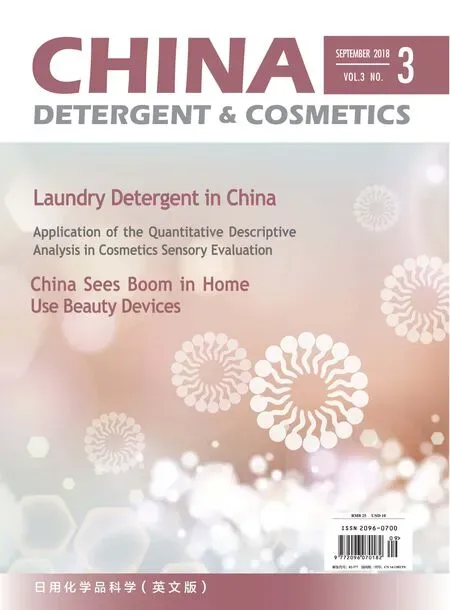 China Detergent & Cosmetics2018年3期
China Detergent & Cosmetics2018年3期
- China Detergent & Cosmetics的其它文章
- Major Industry Events
- Formula Development for Baby Sunscreen Products
- Clinical Study on the Anti-Aging Effect of A Cream Containing Ginseng Root Extract and L-Carnosine
- Enhanced Solubilization and Stability of Resveratrol in Cosmetic Applications
- Application of the Quantitative Descriptive Analysis in Cosmetics Sensory Evaluation
- New process for the synthesis of a sun-screening agent isooctyl P-methoxy cinnamate
